Art and architecture have always been central to human civilization, serving as the expressions of cultural and societal values, as well as the embodiments of aesthetic and functional aspirations. These two creative disciplines not only shape the physical environment but also the collective memory of a place. In this exploration, Foyer delves deeper into the interiors and architectural features of 12 cities where art and architecture collide, creating cultural escapes that are not only visually stunning but also intellectually enriching.
Florence, Italy

Florence, often referred to as the “Cradle of the Renaissance,” is an enchanting city where art and architecture seamlessly converge to create interiors that are nothing short of masterpieces. The Florence Cathedral (Duomo), for instance, features an awe-inspiring interior. The walls are adorned with frescoes, and the stunning dome, designed by Filippo Brunelleschi, boasts an intricate and breathtaking construction, creating an atmosphere of divine inspiration. The Palazzo Vecchio, a symbol of civic power, showcases magnificent frescoes and sculptures that capture the essence of the Italian Renaissance.
Barcelona, Spain

In Barcelona, the architectural works of Antoni Gaudí dominate the cityscape, and their interiors are as captivating as their exteriors. The Sagrada Familia, an ongoing masterpiece, features an interior that is an enchanting blend of nature-inspired design elements, including soaring columns reminiscent of a forest, and an abundance of coloured stained glass windows that filter the sunlight in a mesmerizing manner. Park Güell, a public park with vibrant mosaics, whimsical structures, and intricate ceramic details, creates a fantastical interior world inspired by the natural environment. Casa Batlló, known for its iconic dragon rooftop, is a private residence with interiors that exude artistic sensibilities, from undulating walls to inventive use of light.
Istanbul, Turkey

Istanbul is a city where architectural treasures are not just external facades; they are repositories of history and culture, with interiors that are richly adorned. The Hagia Sophia, a marvel of Byzantine architecture, offers a space where centuries of history have been etched into its walls. Its interiors feature stunning mosaics, intricate calligraphy, and an awe-inspiring dome. The Blue Mosque (Sultan Ahmed Mosque) showcases interiors adorned with countless blue Iznik tiles, beautiful stained glass, and a mesmerizing combination of geometric patterns and floral motifs. Topkapi Palace, the opulent residence of Ottoman sultans, offers a journey through time, with its lavish interiors filled with exquisite rooms, courtyards, and an array of precious artefacts, providing a glimpse into the opulence of the Ottoman Empire.
Kyoto, Japan

Kyoto, the former imperial capital of Japan, is a city where tradition and innovation come together to create serene and spiritual interiors. The interiors of Kinkaku-ji (the Golden Pavilion) are a sight to behold. The entire structure is gilded with gold leaf, providing a sense of otherworldly beauty. Fushimi Inari Shrine offers an immersive experience with thousands of vermilion torii gates that create a vibrant tunnel of red. The interiors of Kyoto’s traditional teahouses and Zen temples embrace simplicity, utilizing elements like tatami mats, sliding shoji screens, and Zen rock gardens to create spaces that inspire mindfulness and tranquillity.
Paris, France
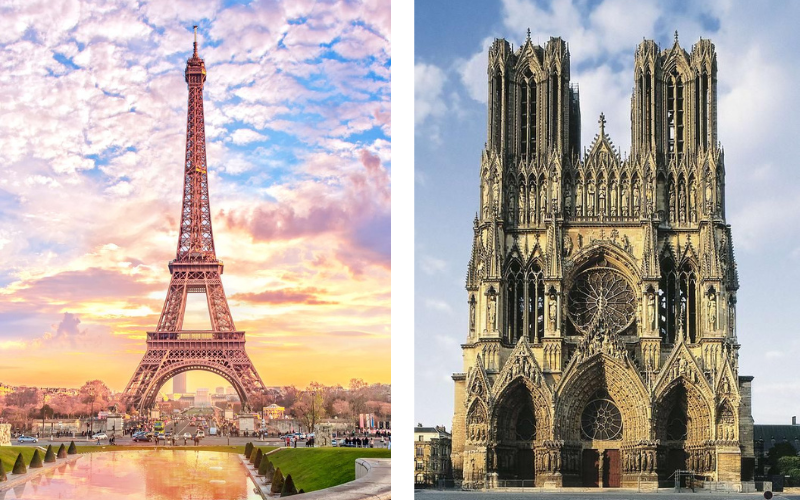
Paris, the “City of Light,” is renowned for its iconic architecture, with interiors that are equally impressive, rich in history, and artistic significance. The Eiffel Tower’s iron lattice structure extends inside the tower, housing an elegant restaurant with panoramic views of the city. The interiors of Notre Dame Cathedral are adorned with exquisite stained glass windows, sculptures, and Gothic arches that narrate stories of faith and history. The Louvre Museum, with its iconic glass pyramid, shelters an astounding collection of art, with interiors that are an integral part of the museum’s charm, featuring opulent galleries that house treasures from all corners of the globe.
Rio de Janeiro, Brazil
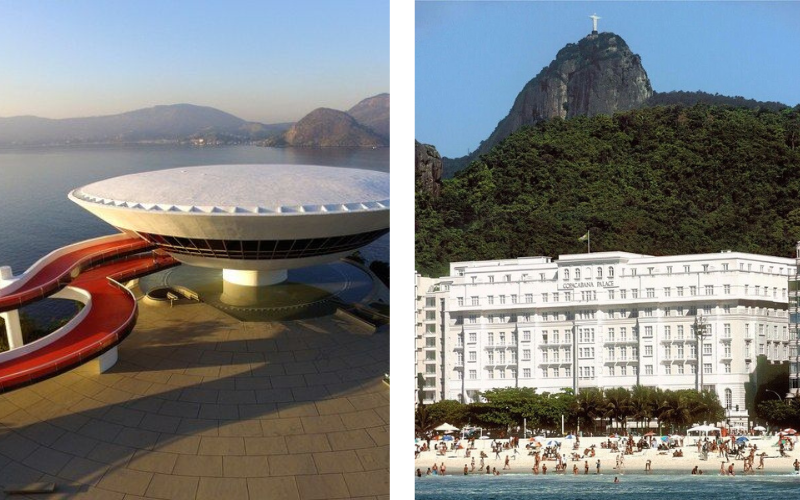
Rio de Janeiro’s modernist architecture, set against the backdrop of lush natural surroundings, offers interiors that reflect the city’s unique blend of modernity and natural beauty. The Niterói Contemporary Art Museum, designed by Oscar Niemeyer, boasts an interior with winding ramps and breathtaking views of Guanabara Bay. The Metropolitan Cathedral of Saint Sebastian, a striking piece of modernist architecture, offers an interior in the shape of a cone, which beautifully captures the play of light and shadow. The botanical gardens and the Copacabana Palace Hotel are more tranquil and traditional, offering interiors that celebrate the city’s historical charm and its stunning natural landscapes.
Athens, Greece

Athens, the ancient cradle of Western civilization, showcases architectural gems with interiors that are as rich in history as they are in aesthetic value. The Parthenon, situated atop the Acropolis, boasts grand interiors with Doric columns and intricate friezes that tell tales of Greek mythology and politics. The National Archaeological Museum houses an extensive collection of sculptures, pottery, and artefacts from ancient Greece within interiors that evoke a sense of timeless beauty.
New York City, USA
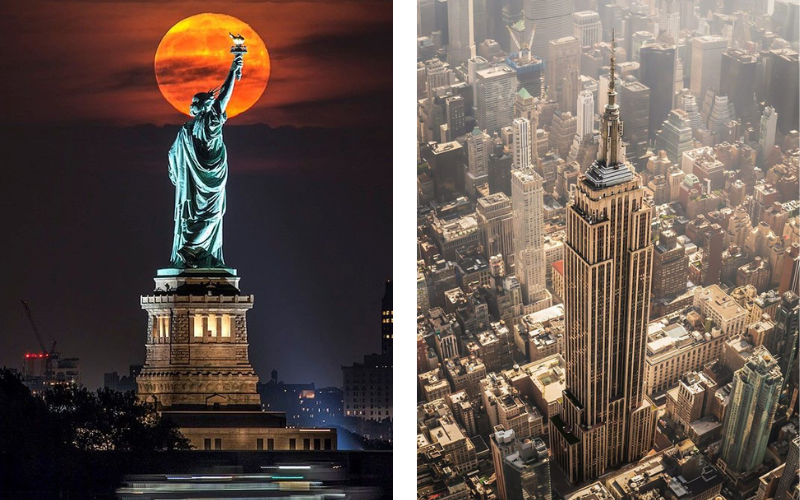
New York City’s skyline is a testament to the architectural and artistic prowess of humanity, with interiors that are as diverse and captivating as the city itself. The Empire State Building’s art deco lobby is a beautifully preserved homage to the roaring twenties, adorned with stunning murals, polished marble, and intricate brass details. The Solomon R. Guggenheim Museum, designed by Frank Lloyd Wright, features a spiralling interior that is a work of art in itself, with a central atrium that houses a unique and innovative display of modern and contemporary art. One World Trade Center, a symbol of resilience and hope, boasts a grand, light-filled lobby with a breathtaking installation called “The World’s Largest Kaleidoscope,” creating a space that commemorates the past while looking forward to the future.
Dubai, UAE
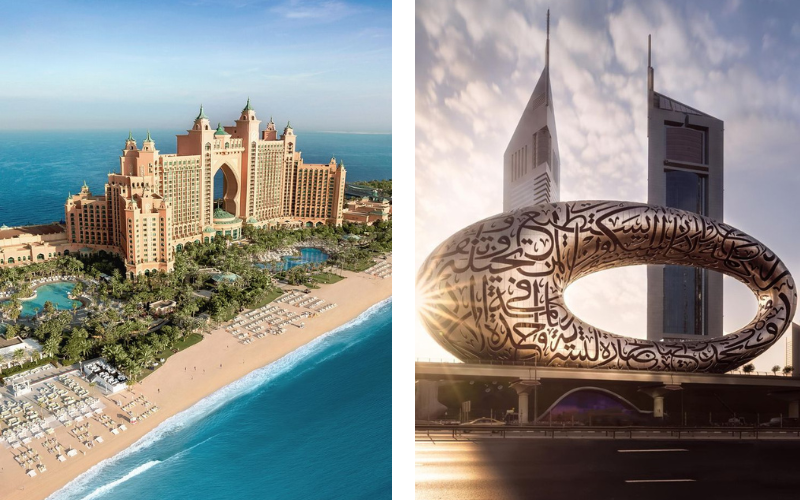
Dubai, a city that has risen from the sands of the desert to become a symbol of modernity and luxury, features architectural marvels with opulent interiors that match its exterior grandeur. The Burj Khalifa, the world’s tallest building, features interiors that are a testament to extravagance, with gold accents, crystal chandeliers, and a sense of luxury that pervades the entire structure. The interiors of the Dubai Opera House are equally impressive, with a unique dhow-shaped design and a stunning chandelier that resembles falling rain, creating a space that celebrates the performing arts in an unparalleled setting. The Palm Jumeirah’s luxurious hotels and apartments showcase lavish interiors with panoramic views of the Arabian Gulf, offering a blend of contemporary design and coastal elegance.
Prague, Czech Republic

Prague, a city known for its historical architecture and charming streets, boasts interiors that are like stepping into a fairy tale. The Charles Bridge, adorned with statues of saints, leads to Prague Castle, a sprawling complex with grand halls, chapels, and courtyards showcasing Bohemian and Gothic architecture. The interiors of St. Vitus Cathedral, situated within the castle, are particularly breathtaking, with soaring Gothic arches, stunning stained glass windows, and the Royal Mausoleum, housing the remains of Bohemian kings. The city’s historic Old Town Square features colourful baroque buildings with interiors that house charming cafes, boutiques, and galleries, providing an intimate and inviting experience.
Beijing, China

Beijing, the capital of China, is a city where ancient history and contemporary innovation converge, creating interiors that are a celebration of the country’s rich cultural heritage and its aspirations for the future. The Great Wall of China, a UNESCO World Heritage site, not only offers panoramic views from its ramparts but also provides access to its ancient watchtowers and interiors, where visitors can immerse themselves in the history of China’s military might. The Forbidden City, a vast palace complex, is home to a myriad of ornate halls, courtyards, and gardens, creating a space that reflects the imperial power and cultural richness of China’s past. The Bird’s Nest Stadium, designed for the 2008 Beijing Olympics, is a marvel of contemporary design, with a striking lattice structure that extends into its interior, making it a unique sports arena that symbolizes the fusion of tradition and innovation.
Cape Town, South Africa
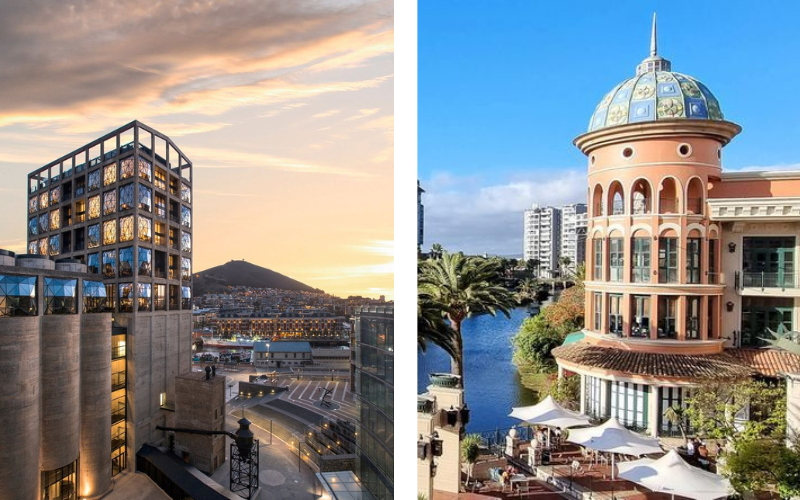
Cape Town, set against the backdrop of Table Mountain, is known for its contemporary architectural wonders, with interiors that complement the natural beauty of the city. The Zeitz Museum of Contemporary Art Africa, housed in a repurposed grain silo, features innovative interiors with dramatic atriums, art galleries, and exhibition spaces that challenge conventions of space and art. The V&A Waterfront, a mixed-use development, showcases a blend of modern design with the rustic charm of the historic harbour, offering a wide range of interiors that include upscale restaurants, boutique shops, and upscale hotels with picturesque views of the harbour and Table Mountain.
These 12 cities provide not only visual spectacles but also immersive interiors that tell stories of culture, history, and human creativity. Art and architecture do not exist solely for aesthetics; they are windows into the soul of a society, a means of understanding its past, present, and future. Exploring these cities is like embarking on a journey through time, where the collision of art and architecture offers a multifaceted and enriching experience for all who visit. These cities inspire, educate, and enchant, offering cultural escapes that are both visual feasts and intellectual revelations.


